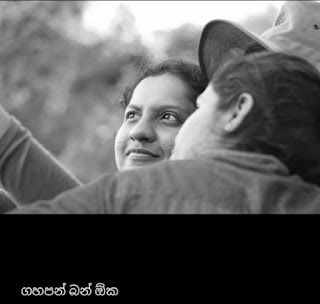Pectoril of Paleo Hunter
#යාල_ගිහින්_අවුරුද්දයි!!! (The Palaeo Hunters)
Photos සහ අදහස් ඉස්සුවේ Chanaka Udaya & Chandima Wanigathunga ගෙන්....
මීට හරියටම අවුරුද්දකට කලින් අපි යාල ජාතික වනෝද්යානයට ගියේ කැලණිය විශ්වවිද්යාලයේ පුරාවිද්යා පශ්චාත් උපාධි ආයතනයේ Diploma in Palaeobiodiversity දෙවෙනි කණ්ඩායම (2015/2016 Batch) විදියට Palaeobiodiversity Exploration 1ක් කරන්න. Palaeobiodiversity කියන subject එක ගැන දැනගෙන නොහිටපු ගොඩක් දෙනෙක්ගේ අවධානය දිනාගන්නත්, Palaeobiodiversity subject එක වෙනුවෙන් වේදිකාවක් හදන්නත් අපිට මේ ගමනෙන් පුලුවන් වුණා.
කොච්චර බාධා, විවේචන, මඩ ප්රහාර, ප්රතික්ෂේප කිරීම් ආවත් (වැඩේ පටන් ගන්න කලින් වගේම ඊට පස්සෙත්) අපි තවමත් අපි කරගෙන ආපු වැඩ කරගෙන යනවා. අපිව අනුකරණය කරන, අනුගමනය කරන පිරිසක් බිහිකරන්නත්, Palaeobiodiversity subject එක ගැන සමාජය තුල කතිකාවක් ඇති කරන්නටත් අපිට හැකිවීම ගැන දෙවෙනි කණ්ඩායමේ අපි නිහතමානීව ආඩම්බර වෙනවා.
කාවවත් copy කරන්නෙවත්, කාගෙවත් බාධා ගණන් ගන්නෙවත් නැතිව අපි අපේ ගමන යනවා. Palaeobiodiversity දෙවෙනි කණ්ඩායමේ සාමාජිකයෙක් එහෙම නැත්නම් Palaeo Hunter කෙනෙක් වීම ගැන ආඩම්බර වෙනවා. තවදුරටත් මේ විදියට Palaeobiodiversity field work & research කරගෙන යන්න දෙවෙනි කණ්ඩායමේ අපි බලාපොරොත්තු වෙනවා....
#Palaeo_අපි_හරි_වෙනස්....
Special Thanks- Prof. Gamini Adikari, Mr. Kelum Manamendra-arachchi, Miss. Sonali Premarathna, Mr. Shayamal Iroshana (PGIAR)
From Saku
#යාල_ගිහින්_අවුරුද්දයි!!! (The Palaeo Hunters)
Photos සහ අදහස් ඉස්සුවේ Chanaka Udaya & Chandima Wanigathunga ගෙන්....
මීට හරියටම අවුරුද්දකට කලින් අපි යාල ජාතික වනෝද්යානයට ගියේ කැලණිය විශ්වවිද්යාලයේ පුරාවිද්යා පශ්චාත් උපාධි ආයතනයේ Diploma in Palaeobiodiversity දෙවෙනි කණ්ඩායම (2015/2016 Batch) විදියට Palaeobiodiversity Exploration 1ක් කරන්න. Palaeobiodiversity කියන subject එක ගැන දැනගෙන නොහිටපු ගොඩක් දෙනෙක්ගේ අවධානය දිනාගන්නත්, Palaeobiodiversity subject එක වෙනුවෙන් වේදිකාවක් හදන්නත් අපිට මේ ගමනෙන් පුලුවන් වුණා.
කොච්චර බාධා, විවේචන, මඩ ප්රහාර, ප්රතික්ෂේප කිරීම් ආවත් (වැඩේ පටන් ගන්න කලින් වගේම ඊට පස්සෙත්) අපි තවමත් අපි කරගෙන ආපු වැඩ කරගෙන යනවා. අපිව අනුකරණය කරන, අනුගමනය කරන පිරිසක් බිහිකරන්නත්, Palaeobiodiversity subject එක ගැන සමාජය තුල කතිකාවක් ඇති කරන්නටත් අපිට හැකිවීම ගැන දෙවෙනි කණ්ඩායමේ අපි නිහතමානීව ආඩම්බර වෙනවා.
කාවවත් copy කරන්නෙවත්, කාගෙවත් බාධා ගණන් ගන්නෙවත් නැතිව අපි අපේ ගමන යනවා. Palaeobiodiversity දෙවෙනි කණ්ඩායමේ සාමාජිකයෙක් එහෙම නැත්නම් Palaeo Hunter කෙනෙක් වීම ගැන ආඩම්බර වෙනවා. තවදුරටත් මේ විදියට Palaeobiodiversity field work & research කරගෙන යන්න දෙවෙනි කණ්ඩායමේ අපි බලාපොරොත්තු වෙනවා....
#Palaeo_අපි_හරි_වෙනස්....
Special Thanks- Prof. Gamini Adikari, Mr. Kelum Manamendra-arachchi, Miss. Sonali Premarathna, Mr. Shayamal Iroshana (PGIAR)
From Saku











































